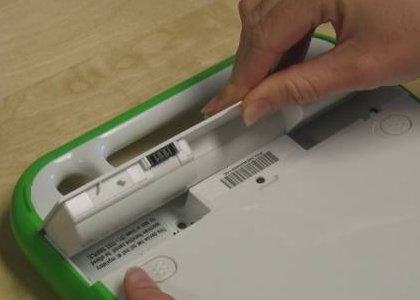Battery Charging
Battery Charging
Types of Batteries
OLPC is using two battery chemistries: NiMH, and LiFePo batteries. The LiFePo batteries allow charging at higher temperatures. The NiMH batteries cannot be charged above about 45 degrees C.
The LiFe batteries have labels "Battery sample" on them, and are lighter than NiMH, as well as allowing for larger capacity (we do not have to reserve capacity to avoid overcharging which would reduce NiMH batteries life).
Battery Charging Issues
Field reports from the BTest-1 and BTest-2 units have have provided us with information on several different types of battery charging issues. The 2 major symptoms are:
1. Units that will not power up when a battery is inserted even when plugged into AC.
2. Batteries that are not recognized/charged.
Symptom 1 is a hardware problem with BTest-1 systems where a very low battery voltage will prevent the power system from starting up correctly. BTest-2 systems should start up properly.
Symptom 2 is the result of a firmware bug that would corrupt some info stored inside the battery.
In some cases both symptoms may be present at the same time.
Recovery of Dead Batteries
The first step in battery recovery is to upgrade the firmware to B83 or later. Please see Autoreinstallation_image or Upgrading_the_firmware for details on how to update your firmware.
BTest-1 Systems
BTest-2 Systems
Long Term Storage
If you plan to store a system for many weeks or months, your best strategy is to fully charge the battery and remove the battery from the laptop. Batteries naturally lose charge with time (how fast depends on the battery and its chemistry), and the embedded controller in the laptop, while sipping tiny amounts of power in its low power state, will drain the battery faster. Even though BTest-2 systems should now always be able to recover batteries that are fully discharged (except those noted above), it is a trickle charge process and time consuming.
As you can see above, letting a battery drain all the way will cause problems when recharging, how severe depends on the circumstances.
This strategy to remove batteries is true for all battery powered equipment, from flashlights up. Batteries sometimes leak. And some chemistries of Lithium batteries (not LiFePo) can get into a metastable state where they cannot be recharged.
